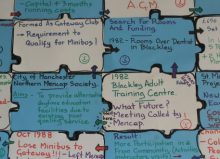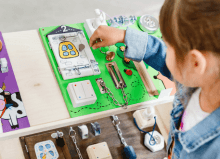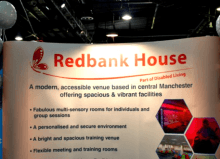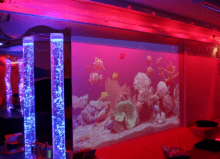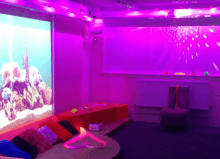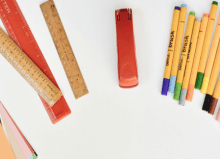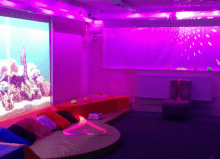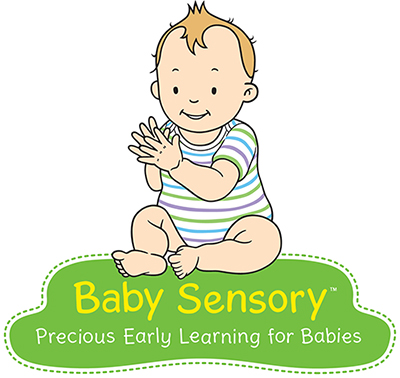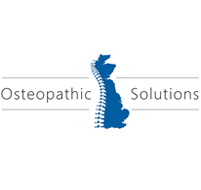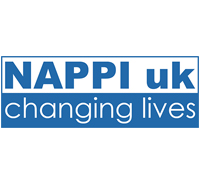Promoting Independence Through Sensory Accessibility

Our guest blog contributor, Joanna Grace, discusses ways of promoting independence to provide an environment that is enabling for individuals with sensory disabilities.
When we think about independence, we tend to think about things like leaving home or going to university where we will gain our independence. But that overlooks the many things we do for ourselves without recognising them as independent acts, or even valuing them as such.
When you stop to think about all the things you can do for yourself and how it would feel if someone did them for you, you start to realise that independence is valuable in and of itself. It is worth helping someone to be as independent as possible, even if they will still be living a life that is very dependent on others through providing them with an environment where they can use their existing skills. Read on to discover different ways of promoting independence for someone with a sensory disability.
How do we provide an environment that is not disabling?
Time is a big factor.
Although it may be quicker to help someone to cut their dinner up for them, or assist them in getting dressed, it may not always be the best option.
Are we in a race? Is the aim of the care we provide to get it all done quickly? Or are we there for their wellbeing? If we are there for their wellbeing, then we need to slow down and allow time.
Many settings have time allowances for staff to perform particular care routines. These same settings invest time and money into improving the care they provide, in buying new equipment, in adopting new strategies etc. There is a very simple way to improve care, and that is to give people time to care.
You can have the most caring and empathetic member of staff who understands the needs of that particular person precisely, but if you do not give them the time to express that care, then you will be running a setting where staff without those qualities thrive. Give time.
Promoting independence through sensory means
We think of enabling independence through physical support mechanisms e.g. a walking frame so someone can get around, a ramp so they do not have to manage the step, a lift to get upstairs and so on. In the same way, there are sensory adjustments we can make to enable someone’s independence. Here are some examples:
Cutlery
Consider someone’s knife and fork laid on the dinner table for them to use, the reflective metal coloured with the colours of the room around, glinting against the patterned table cloth. If your visual processing is not up to speed, you could struggle to spot what is so clearly there to someone who has access to visual capacity.
Choose cutlery with a bold solid matt colour and lay it on a muted tone table cloth of a contrasting hue, e.g. red cutlery on a beige table cloth. People will reach for it far sooner than they did before.
And what about when it is in their hands? Is the cutlery dainty? Is it plastic and lightweight? What message does their hand receive about where that cutlery is? If we can add weight and texture to the cutlery, we support their brain in knowing it is there, making it easier to use.
Clothes
There is value in every piece of independence, not just in completed tasks. Getting dressed can be very tricky for someone with sensory or cognitive differences. They are asked to recognise a bundle of fabric as something which can potentially hold a body shape within it and then to manipulate that fabric either behind their backs or whilst standing on one leg or another. It is quite a challenge.
Even if the person you are supporting is not able to put on their jumper by themselves, there is still independence within the dressing task that you can foster. Hanging the clothes up in preparation for getting dressed so that they look recognisably body shaped can provide visual support for someone choosing what to put on next. This can greatly help when promoting independence. When you get dressed, do you do it from bottom up or top down? When you decide that, you exert your independence. You can give the person you support an environment in which they can do the same.
Providing knickers or pants that are a contrasting colour to outwear can support someone to visually discriminate between the two and help them maintain independence within monitoring their personal dignity.
Removing sound barriers
Our brains make choices about which information to process. We receive far more information from our senses than we actually perceive. For example, are you overwhelmed by the crunching and squelching noises in your mouth when you eat? Most likely not as your brain chooses not to hear these sounds. Although you can hear it, your brain filters it out.
However, some people are unable to filter these sounds. For all of us, it is possible for an overload of information from one sense to block out information coming in from another. For people living with a different neurology to our own, this overload may happen in response to lesser amounts of stimulation. So if, for example you want to help someone to eat, it is important to be aware and reduce the amount of external noise around them.
Through thinking on a sensory level, you may spot more ways of enabling and promoting independence through sensory means.







































